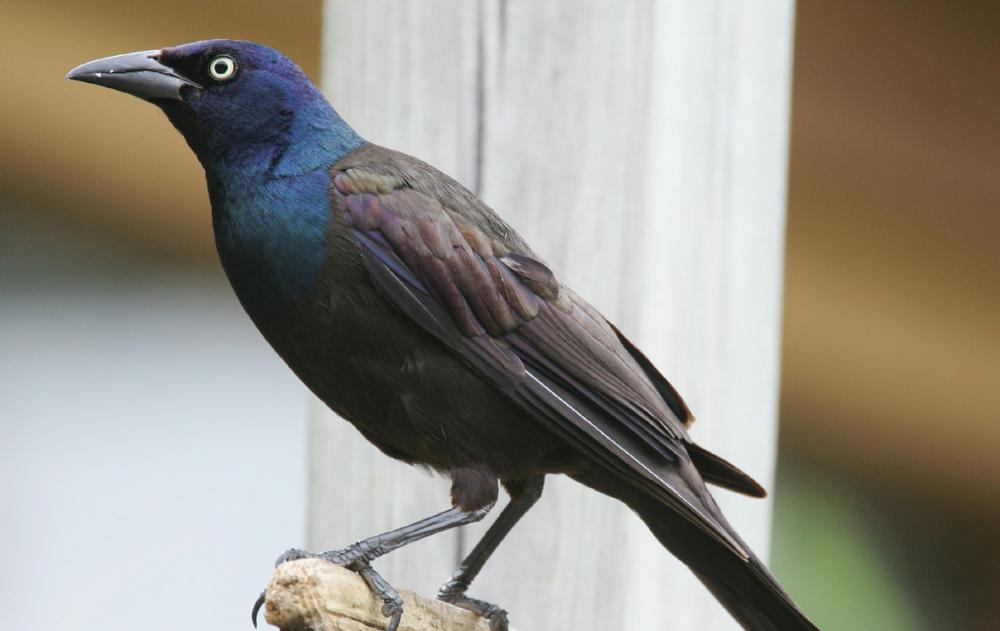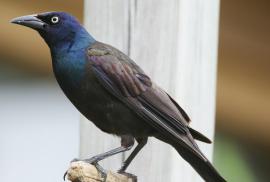Guide to Boreal Birds
Overview
The Common Grackle is an opportunistic feeder, varying an insect and grain diet with crayfish, frogs, mice, and both the eggs and the young of small birds. During courtship, it jerks its body, lowers wing, tail, and head, and squeals. It also exhibits its long, conspicuous tail in display flight. In some northern areas it congregates by the thousands during migration as well as in winter roosts. This species is smaller and lacks the strong sex differences of the Great-tailed Grackle.
Description
12" (30 cm). Jay-sized. Long, wedge-shaped tail displaying a longitudinal ridge or keel when in flight. Appears all black at a distance but is actually highly iridescent, with colors varying from blue to purple to green to bronze, depending on the light. Bright yellow eyes. Female duller and somewhat smaller than male.
Voice
Clucks; high-pitched rising screech, like a rusty hinge.
Nesting
5 pale blue eggs, with black scrawls, in a bulky stick nest lined with grass, placed anywhere from low in a bush to high in a tree. Nests partly in colonies, most often in tall evergreens.
Habitat
Lawns, parks, fields, open woodlands.
Range/Migration
Breeds from northern Alberta, central Ontario, and Newfoundland south to Gulf Coast states east of Rockies, but expanding into Idaho and Washington in Northwest. Winters north to Kansas, southern Great Lakes region, and New England.



